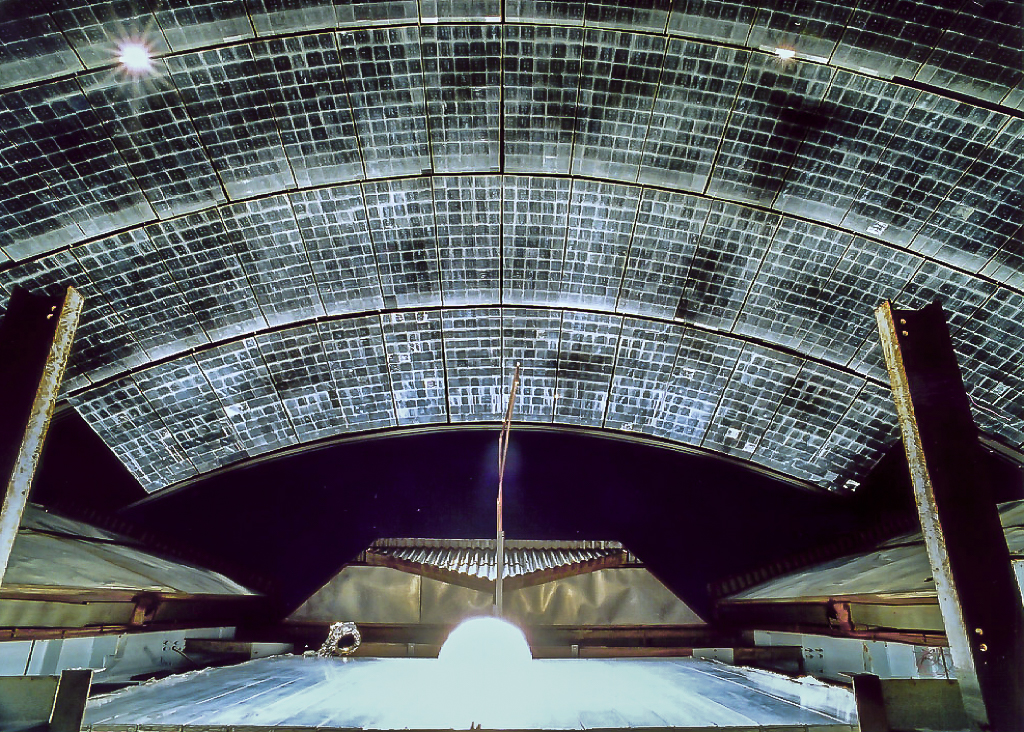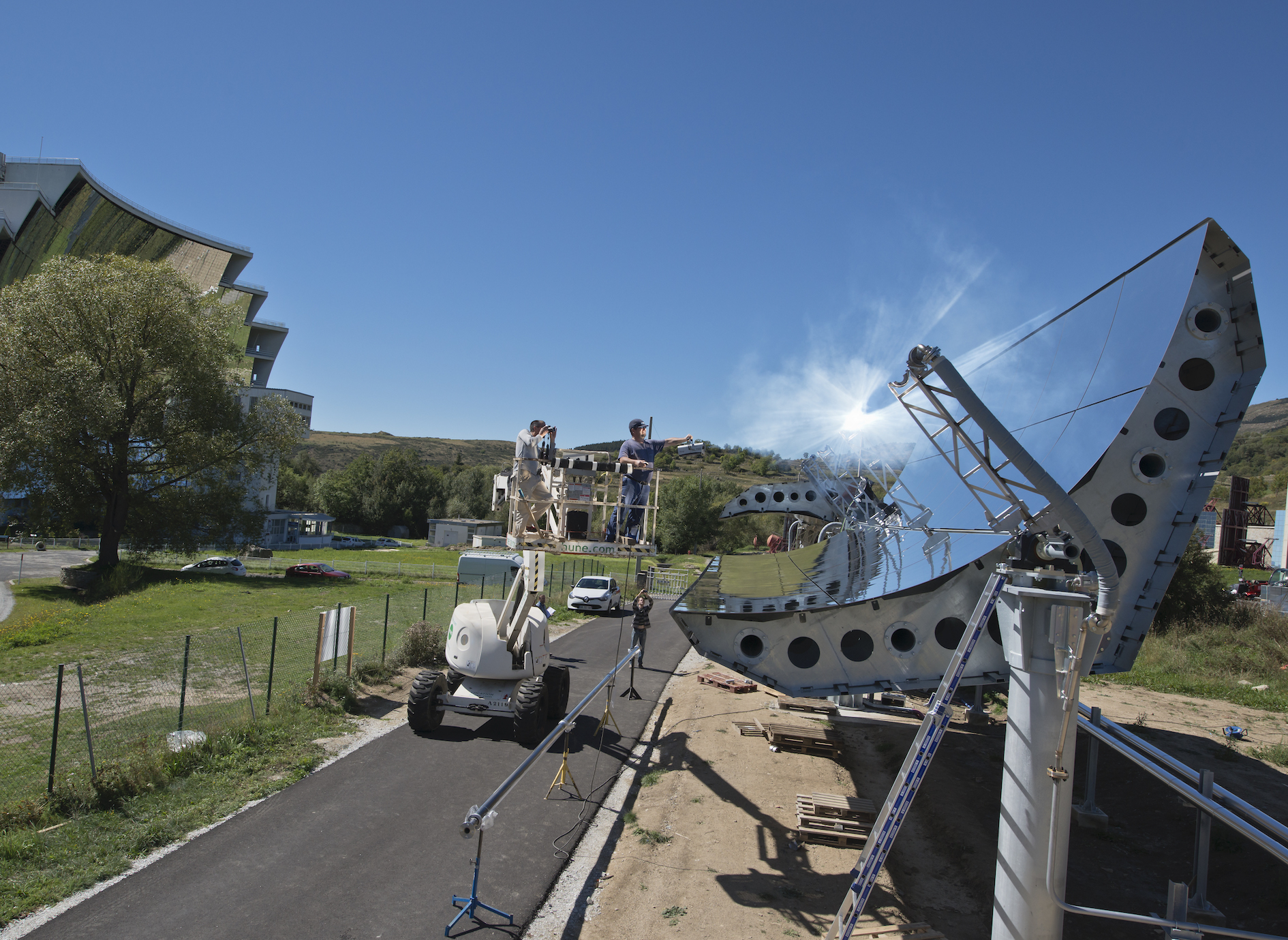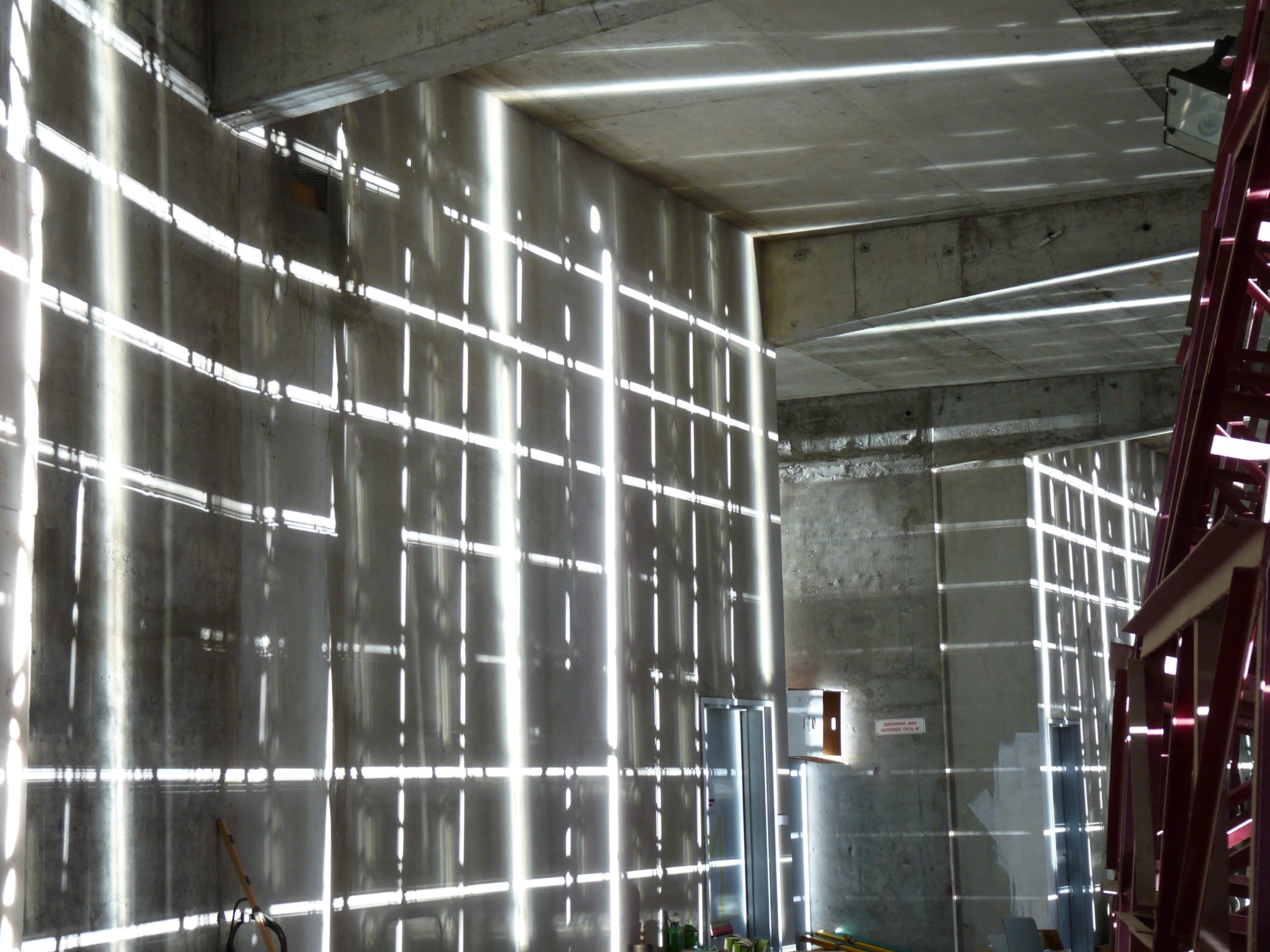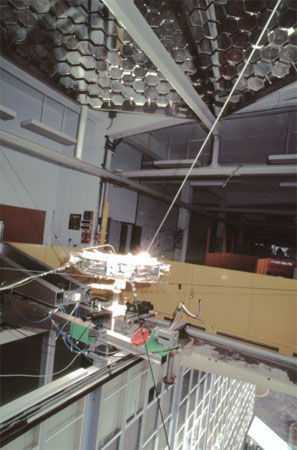Solar Concentrators
The PROMES-CNRS solar facilities in Odeillo offer a range of high and very high flux solar furnaces, capable of producing very high temperatures (over 3000°C). They are equipped with a wide variety of reactors and modular equipment, designed and developed in the laboratory, to carry out, in the best conditions, high level research in a very wide scientific field. In addition, an extensive set of in-situ diagnostic tools and advanced means of analysis and characterization of materials complete these facilities.
These solar installations are adapted to both fundamental research with high risk stakes, and more applied research that can go as far as the industrial pilot.
For solar furnaces, the availability of high fluxes and/or high temperatures without contamination, and the ability to control the atmosphere (pressure, vacuum, composition), make them unique instruments for the study of materials synthesis, solar chemical processes, solar energy chemical storage cycles, thermo-physical behavior of materials under extreme conditions, and the fundamental physics of high flux.
The laboratory’s solar facilities include :
- the 1 megawatt solar furnace ( MWSF ) and its environment
- the 11 medium power solar furnaces ( MSSFs ) and their environment
- a parabolic trough pilot plant (MicroSol-R) and its environment
The 1 megawatt solar furnace ( MWSF ) consists of a truncated faceted parabolic mirror, 1830m2 in size and 18 m in focal length, illuminated by a field of 63 movable heliostats with a total area of 2835 m2 . The parabola is attached to the north façade of the 8-story building that houses 9 of the 11 medium power solar furnaces (MSSFs), offices, library, conference rooms, workshop, and other laboratory research activities.
The MWSF focuses 1 megawatt on an area approximately 80 centimeters in diameter with a maximum of 10 MW/m2; at the focal point.
The experimental areas of the MWSF are located on the 4th and 5th floors of the focal tower; the other floors of the tower are used as diagnostic, preparation and storage rooms. A 10-ton freight elevator can be used to install heavy experimental equipment.
The heliostat field is controlled and monitored from the tower by an open-loop coordinate servo system.
The experimental area is equipped with a retractable and orientable platform, controlled by computer, for the precise positioning of the experimental device.
Several experimental reactors allow to undertake experiments under high vacuum or under controlled atmosphere. These are equipped with high performance optical pyrometers, a spectro-radiometer, a mass spectrometer, and a quartz microbalance.
The medium power solar furnaces (MSSFs) consist of 11 concentrators ranging from 1.5 to 6 kilowatts :
- nine are located on the 6th floor of the main building, operating along a vertical axis: one 6 kilowatt, four 2 kilowatt and four 1.5 kilowatt. They are lit by 3 heliostats located on the south side of the building.
- a set of two 2 kilowatt concentrators with horizontal axis is located in an annex building.
The 6 kilowatt concentrator has a concentration rate of about 4500, for a focal spot of about 8 centimeters in diameter.
The 2 and 1.5 kilowatt concentrators have a concentration rate of about 15000, for a focal spot of 1 centimeter in diameter.
The MSSFs are equipped with shutters or flow controllers, vacuum or controlled atmosphere chambers, temperature measurement devices and diagnostic instruments.
The “MicroSol-R” microcenter consists of four subassemblies providing the following functions: (1) solar energy capture, (2) heat storage, (3) steam production and (4) electricity generation.
Solar energy collection is provided by three parabolic trough modules, each 12 meters long and 5.7 m wide. One of the modules is oriented North-South, the other two are oriented East-West. Each module is equipped with 3 PTR70® Schott collectors (protective glass and absorber tube). The transfer fluid used is Jarytherm® DBT thermal oil produced by Arkema. The targeted operating temperatures are 220°C at the entrance of the solar field and 300°C to 330°C at the exit of the solar field. Thermal storage is provided by two technologies. A two-tank system (one cold tank and one hot tank) and a single-tank thermocline system.

















